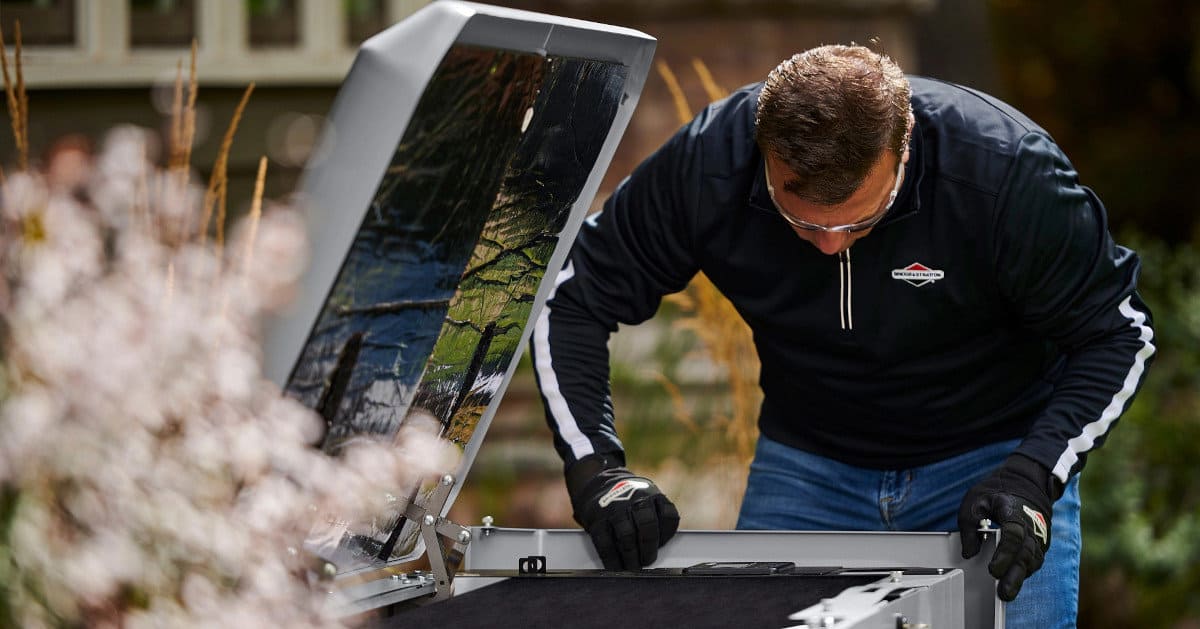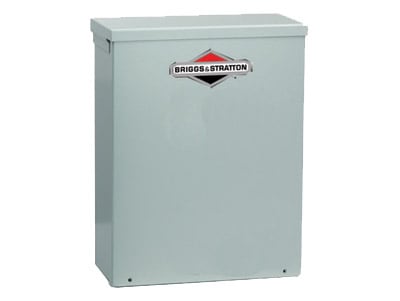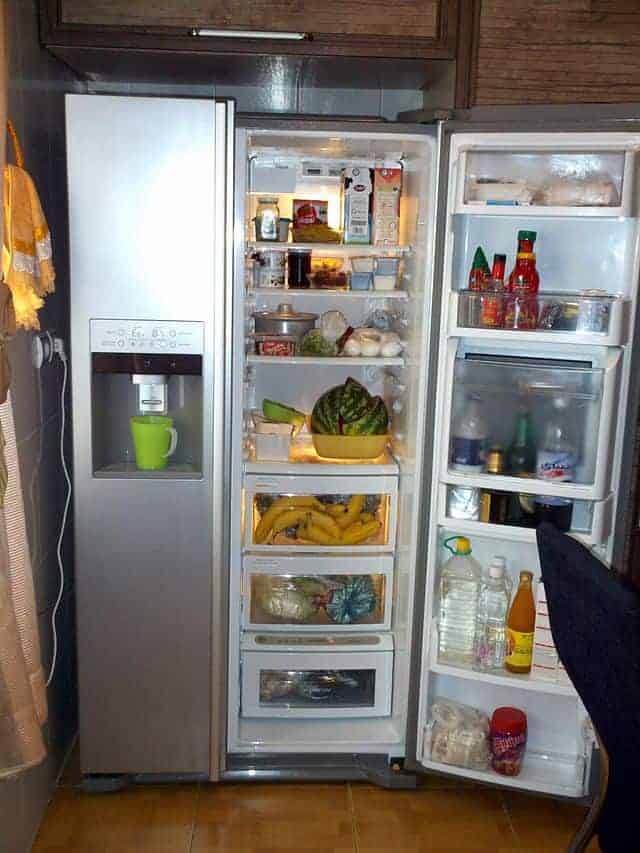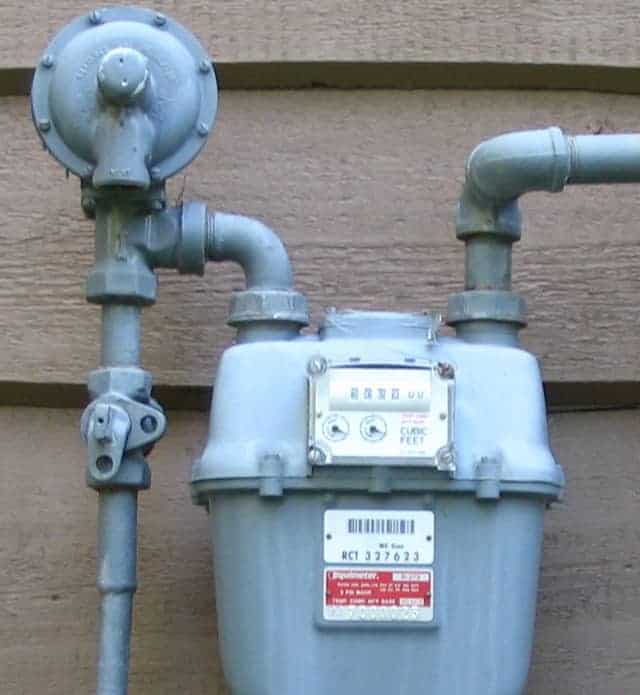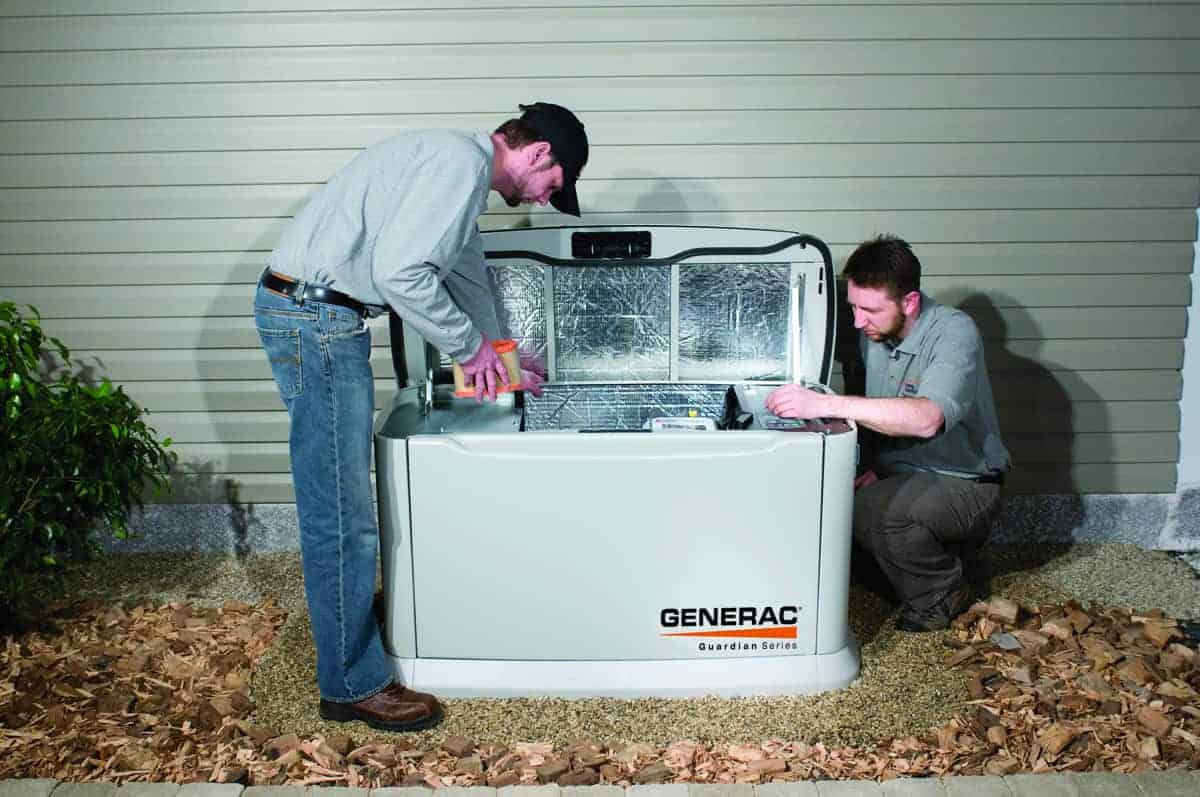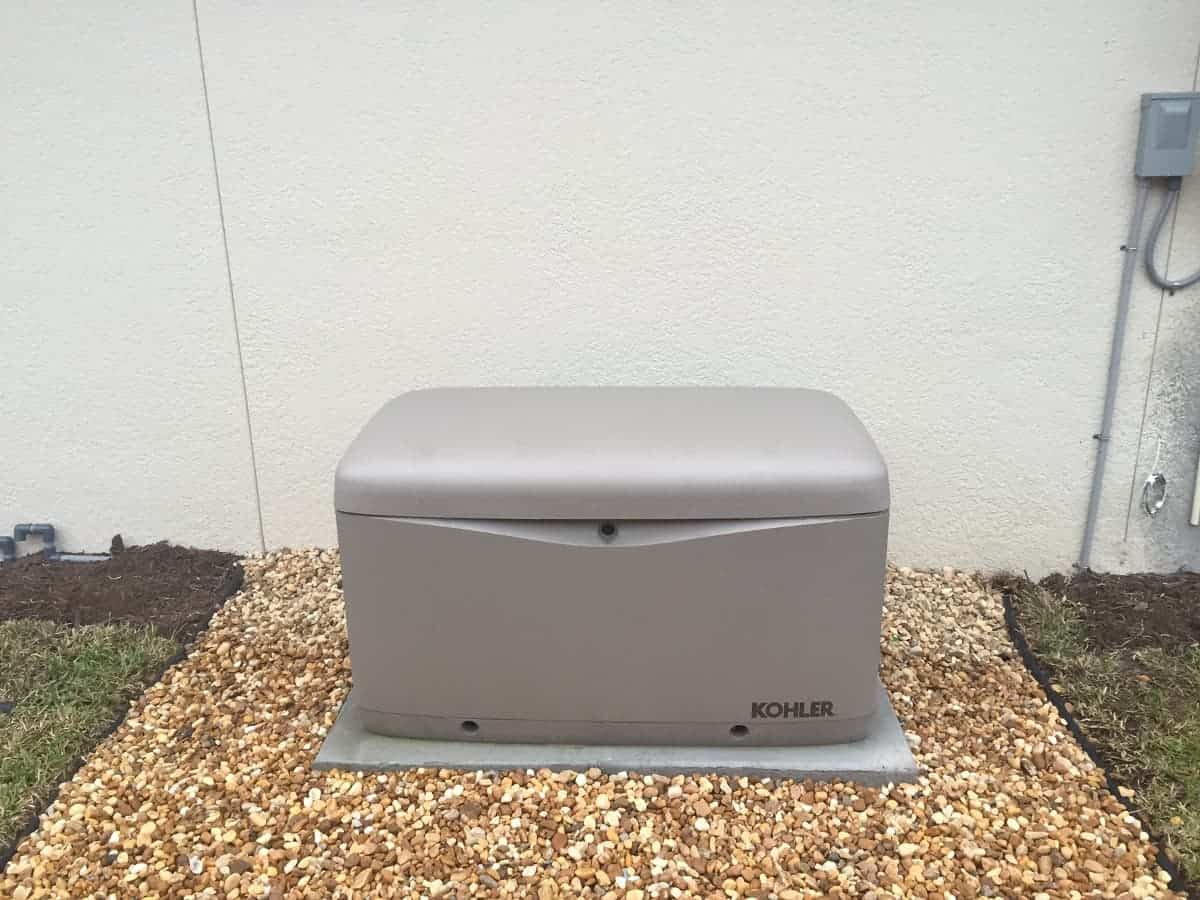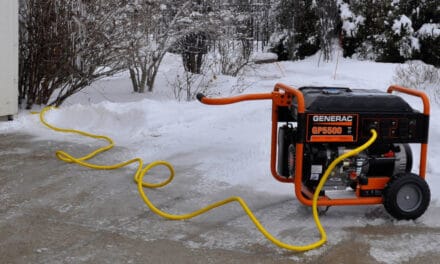A technician inspects a standby generator while performing regular maintenance. Most standby generators can run from one to two weeks without an oil change, but check the oil daily and top off if necessary. Never overfill the generator oil.
5 Facts About Standby Generators for Backup Power
Standby generators restore power when any interruption in utility electric power occurs. Disruptions caused by storms or by equipment failures are the most common, but other causes include traffic accidents, damage caused by animals, or even deliberate sabotage.
Renewable energy and off-grid users may experience periods when the wind or sun cannot supply enough power to keep the batteries charged. The home or business might require more energy than the storage batteries can supply.
Regardless of the outage cause, electricity is still necessary to keep essential electrical circuits operating. A standby generator ensures that the home or business has the power it needs, even when the power fails, no matter what the reason.
Standby Generator Automatic Operation
Unlike portable generators, the permanent installation of a standby generator is very much like a furnace or a hot water heater. Just as a furnace only turns on when heat is required, a standby generator turns on automatically when the power goes out.
The standby system detects a power outage immediately and waits a few seconds for the power to return. If it does not, it starts the generator engine. The automatic transfer switch disconnects the building from the utility lines and connects it to the generator. It all happens just seconds after the power goes out.
When the utility restores power, the system disconnects the generator before it reconnects the utility lines. The generator runs a short cool-down cycle and shuts itself off to wait for the next power outage.
Electric Generator Power for Essentials
We are more reliant on electrical power at home and at work than ever before. A power outage represents the loss of a critical resource that homes and businesses rely upon not just for convenience, but for safety and security.
A House relies on electrical power for sump pumps to keep basements dry, refrigerators and freezers to keep food safe, and furnaces and air conditioners to keep a home cool in the summer and warm in the winter. Without the furnace, the pipes can freeze and burst in cold weather and then flood the house when the temperature rises enough to thaw the pipes. Whenever a refrigerator or freezer does not have power, the temperature inside begins to rise. During an outage, food can become unsafe to eat with hours.
A standby generator keeps the power on, which means the food in refrigerators and freezers stays safe, essential home systems like sump pumps and furnaces operate normally, and medical equipment can do its job, while everyone enjoys the modern conveniences provided by electricity.
With a commercial standby generator, stores and restaurants can keep the doors open. Office buildings keep the lights on and computers running. Many phone systems need a source of power beyond that supplied by the telephone utility.
Standby generators for emergency power keep our homes safe and our businesses open.
Standby Generator Fuel Types and Supplies
Although diesel generators are available for residential and commercial use, liquified petroleum gas (propane or LP Gas) and natural gas are the most common fuels for a standby generator. Natural gas from a municipal supply can keep a generator running for weeks. LP tanks do need occasional refilling, but a propane-powered generator can also keep the lights on for extended periods. How long a propane generator runs on a large tank at a home or business depends on the fuel consumption of the generator and the size of the tank.
A standard residential natural gas meter might not have the capacity to supply some of the larger standby generators. Before installation, check with the gas utility to ensure your meter can supply enough gas. You may need to upgrade the meter. Your LP gas supplier can help you determine if the regulator on your storage tank is sufficient.
Standby Generator Power Capacity
All generators have two ratings. Running Watts is the power in watts or kilowatts that a generator can supply continuously. Surge Watts or Max Watts refers to a surge of power required to start electric motors which require up to six times the power during startup.
Need to Know: Running Watts and Starting Watts
Some generators provide more power while operating on LP Gas than they do on natural gas. The generator will have different starting watts and surge watts ratings for each type of fuel.
The amount of fuel used varies with the amount of power used. As the electrical load on the generator changes, the fuel use changes at the same time. Since power use often varies continuously, the amount of fuel used will also vary continuously.
For example, a central air conditioner is a heavy load. When the air conditioner turns on, the additional load slows the generator. The generator governor senses the RPM drop and increases the gas supply to provide more power. It’s very much like stepping on the gas to pass a car or using more fuel because you’re pulling a heavy trailer.
Hours before Hurricane Ian made landfall on Florida, 200,000 utility customers had already lost power. A week later, 300,000 customers or approximately 600,000 people were still without power. At the peak of the outage, the storm left an estimated 5 million people in the dark.
Over 200k electric customers are now without power in #Florida as #HurricaneIan approaches landfall.
— PowerOutage.us (@PowerOutage_us) September 28, 2022
[2022-09-28 10:37 AM EDT]https://t.co/kJ0OPcOSrS #PowerOutage pic.twitter.com/hyVdXSDHtY
Standby Generator Maintenance—More Important than You Think
All engines need periodic maintenance and generator engines are no exception. During an extended outage, a standby generator may run for days or even a month or more. It is important to service the generator according to the maintenance schedule. Standby units need service as often as every 100 hours, or about every four days. Maintenance includes changing the oil and oil filter, replacing spark plugs, and changing the air filter. Some generators require valve clearance adjustment. Dependable starting and running requires a clean air filter and spark plugs.
100 hours or four days may see like a short interval between oil changes. However, 100 hours compares to a car operating on the highway at 60 MPH for 6000 miles. While it’s tempting to stretch the maintenance on cars, generators, and other engines, we all know it is bad for the engine. Manufacturers warranties require on-time maintenance. Miss a scheduled maintenance date and the manufacturer will void the warranty if the skipped maintenance caused damage.
Note: It is also worth mentioning that most portable generators require maintenance every 25 to 50 hours instead of 100. Small engines work hard. Longevity and good maintenance go hand in hand.
Always keep generator maintenance kits and extra oil on hand for long outages. Also, keep the generator clear of wind-blown debris, lawn clippings, ice, or snow that could block the air intake or exhaust on either side of the generator. Don’t allow weeds to grow or plant anything within the clearance area required by the manufacturer.
The vents on the generator provide air flow to keep it cool and to supply the engine. Clear away leaves, grass clippings, and other debris, and remove snow or ice that may cover the vents or the top of the unit.
Updated December 31, 2022

